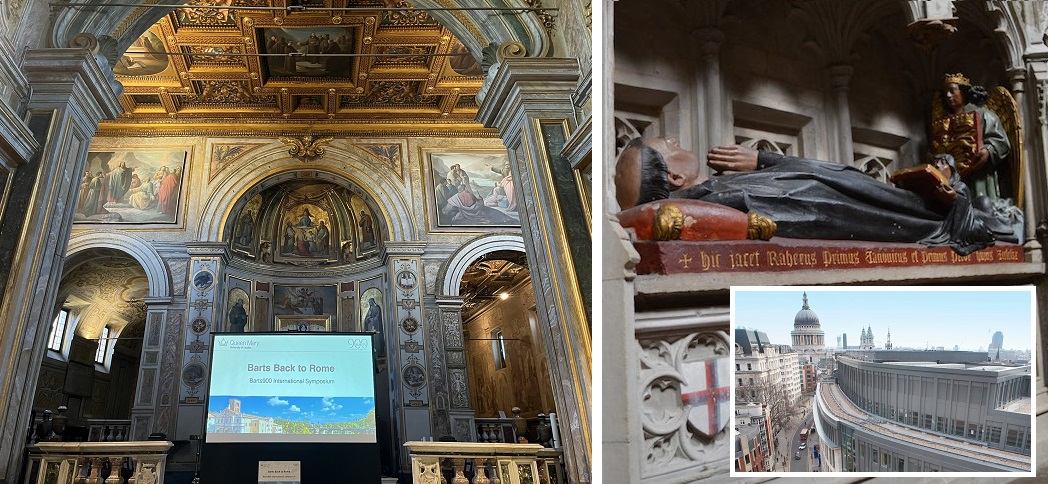Retracing our founder's steps in Rome

It was on a pilgrimage to Rome, 900 years ago, that Rahere, a favourite courtier of King Henry I, fell ill and, believing he was dying, vowed “erect a hospital for the restoration of poor men.”
Nine centuries later, representatives from the hospital he created – St Bartholomew’s in the City of London – returned to Rome to acknowledge his achievements and celebrate the organisation’s milestone birthday.
Conceived by Professors Sir Mark Caulfield, David Leslie and Paulo Pozzilli, and arranged by Queen Mary University of London in conjunction with the University of Rome’s biomedical campus, the Barts900 International Symposium was a fascinating day of talks on history and medicine from both local and London-based clinicians and academics.
The Basilica di San Bartolomeo all'Isola, or ‘The Basilica of St. Bartholomew on the Island’, proved a suitably auspicious setting for the event, one of the last in our 900th anniversary year.
Dating back to 998CE, the basilica contains relics of St Bartholomew the Apostle, patron saint of doctors and healers, who, in a vision, directed Rahere, upon his return to England, to build a hospital – St Bartholomew’s – and church – St Bartholomew’s the Great.
Located on the River Tiber, the basilica has been associated with healing throughout history and features a hospital in operation since 1584.
Contributors to the one-off conference included Professor Virginia Davis from QMUL’s School of History, who revealed the role of medicine in 12th century Europe.
Father Marcus Walker, rector of St Bartholomew’s the Great, gave a talk on Rahere’s legend.
And Professor Charles Knight, chief executive of St Bartholomew’s Hospital, celebrated the shared heritage of the two great institutions.
He said: “What a wonderful way to celebrate our 900th anniversary and to retrace the steps of our founder, Rahere.
“Thank you to our speakers for such fascinating talks on both history and medicine, past and present, and to our Italian hosts who made us feel so welcome across the weekend.
“The connection between ‘Barts’ and the Basilica is incredibly strong and will no doubt last another 900 years!”
St Bartholomew’s Hospital took about ten years to complete and Rahere ran the site for 20 years until his death around 1143.
He is buried in St Bartholomew the Great.
Pictured above: inside the basilica in Rome; Rahere's tomb in St Bartholomew the Great and modern-day St Bartholomew's Hospital. Below: Professor Charles Knight addresses the symposium.

